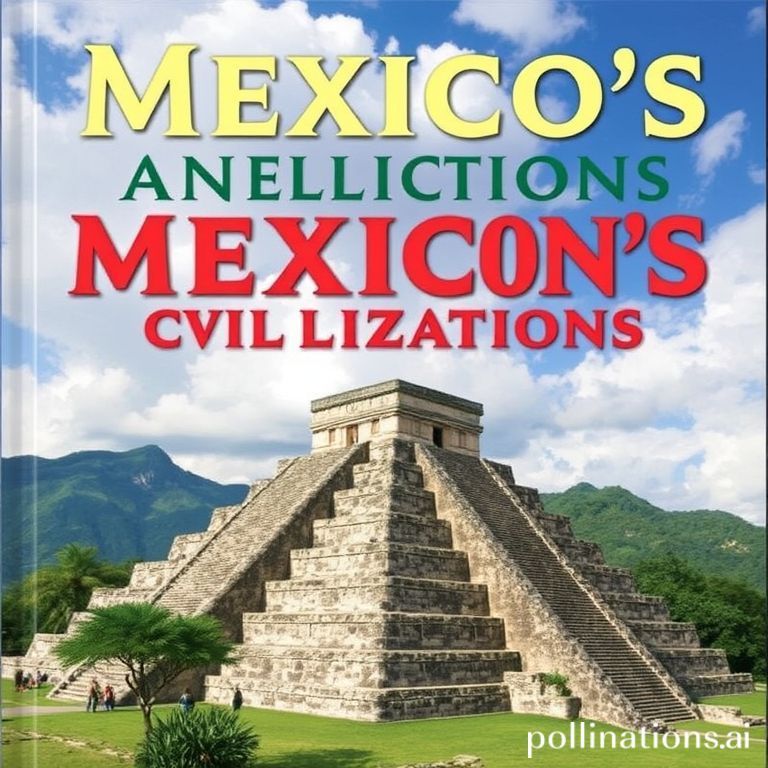Mexico, a land brimming with vibrant culture and breathtaking landscapes, owes its unique identity to the remarkable civilizations that thrived here long before the arrival of Europeans. These ancient societies, with their sophisticated understanding of mathematics, astronomy, art, and architecture, left an indelible mark on the country’s history and continue to inspire awe and fascination today. Exploring their legacies provides a profound understanding of Mexico’s cultural tapestry.
From the enigmatic Olmecs to the mighty Aztecs, each civilization contributed unique elements that shaped the cultural landscape of Mexico. These contributions range from monumental pyramids and intricate writing systems to complex social structures and profound religious beliefs. Join us as we delve into the captivating world of Mexico’s ancient civilizations and uncover the secrets of their enduring influence.
The Olmecs: Mother Culture of Mesoamerica
Considered the “mother culture” of Mesoamerica, the Olmec civilization flourished from approximately 1400 to 400 BCE. They inhabited the Gulf Coast region of Mexico, in the modern-day states of Veracruz and Tabasco. The Olmecs were renowned for their impressive artistic skills, particularly their colossal stone heads, which stand as iconic representations of their power and artistry.
Key Contributions of the Olmecs:
- Monumental Architecture: The Olmecs constructed impressive ceremonial centers, including La Venta and San Lorenzo, featuring earthen pyramids, plazas, and elaborate drainage systems.
- Colossal Stone Heads: These massive sculptures, carved from basalt rock, depict Olmec rulers and are a testament to their engineering and artistic capabilities.
- Writing System: While the exact nature of their writing system is still debated, the Olmecs are believed to have developed one of the earliest forms of writing in Mesoamerica.
- Religious Beliefs: The Olmecs worshipped a variety of deities, including a jaguar god, and practiced ritualistic ceremonies.
The Maya: Masters of Mathematics and Astronomy
The Maya civilization, renowned for its intellectual and artistic achievements, flourished from approximately 250 to 900 CE in southeastern Mexico and parts of Central America. They developed a sophisticated writing system, a complex calendar system, and made significant advancements in mathematics and astronomy.
Highlights of the Mayan Civilization:
- Advanced Mathematics: The Maya developed a base-20 numerical system and were among the first to use the concept of zero.
- Sophisticated Calendar: Their calendar system, based on meticulous observations of the sun, moon, and stars, was remarkably accurate.
- Hieroglyphic Writing: The Maya developed a complex hieroglyphic writing system used to record their history, beliefs, and scientific knowledge.
- Impressive Architecture: The Maya built magnificent cities, such as Chichen Itza, Palenque, and Tikal, featuring towering pyramids, elaborate palaces, and intricate carvings.
Teotihuacan: The City of the Gods
Teotihuacan, located northeast of present-day Mexico City, was one of the largest and most influential cities in Mesoamerica. It flourished from approximately 100 BCE to 550 CE and was a major center of trade, religion, and culture. The city’s impressive pyramids, including the Pyramid of the Sun and the Pyramid of the Moon, attest to its grandeur and power.
What Made Teotihuacan Unique:
- Urban Plaing: Teotihuacan was meticulously plaed, with a grid-like layout and a central avenue known as the “Avenue of the Dead.”
- Monumental Architecture: The city’s massive pyramids and temples were adorned with colorful murals and sculptures.
- Economic Power: Teotihuacan controlled vast trade networks and was a major source of obsidian, a valuable resource used for tools and weapons.
- Mysterious Decline: The reasons for Teotihuacan’s decline remain a mystery, but it is believed to have been caused by a combination of factors, including environmental changes and internal conflicts.
The Aztecs: Warriors and Empire Builders
The Aztecs, also known as the Mexica, rose to power in the Valley of Mexico in the 14th century. They were skilled warriors and empire builders who established a vast empire that stretched across much of central Mexico. Their capital city, Tenochtitlan, was a magnificent metropolis built on an island in Lake Texcoco.
Key Aspects of Aztec Civilization:
- Military Prowess: The Aztecs were formidable warriors who conquered neighboring city-states and built a powerful empire.
- Complex Social Structure: Aztec society was highly stratified, with a powerful emperor at the top and a large class of commoners and slaves at the bottom.
- Religious Beliefs: The Aztecs worshipped a pantheon of gods and practiced human sacrifice to appease them.
- Tenochtitlan: Their capital city was a marvel of engineering, with canals, causeways, and floating gardens known as chinampas.
Conclusion
The ancient civilizations that shaped Mexico left behind a legacy of iovation, artistry, and cultural richness. From the colossal heads of the Olmecs to the intricate calendars of the Maya and the monumental pyramids of Teotihuacan, these civilizations continue to inspire and captivate us. By understanding their contributions, we gain a deeper appreciation for the vibrant and complex history of Mexico. Their influence is still visible today in the language, art, and traditions of the Mexican people.
If you enjoyed this article, don’t forget to explore more inspiring stories on Life in Mexico!
IMAGE: A vibrant and detailed digital painting depicting an ancient Mesoamerican city at sunset. The scene features towering pyramids, bustling marketplaces, and people adorned in traditional clothing. The color palette includes warm oranges, reds, and yellows, with hints of deep blue in the sky. The overall mood is awe-inspiring and majestic, capturing the grandeur of these ancient civilizations. The style should be reminiscent of historical illustrations with a touch of fantasy.


